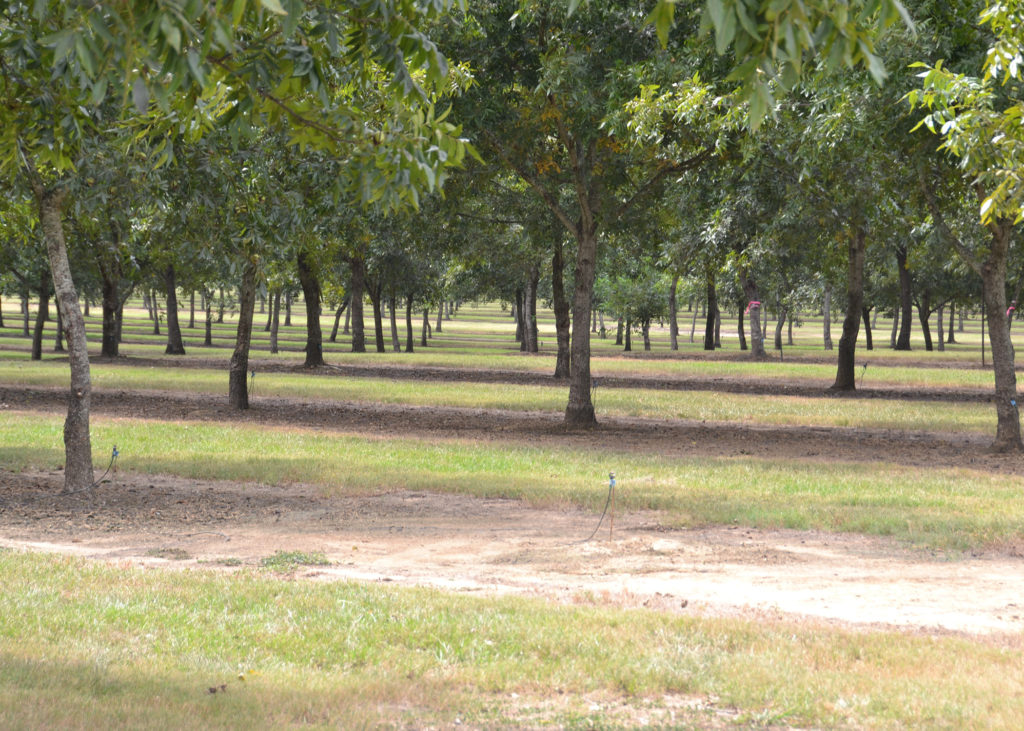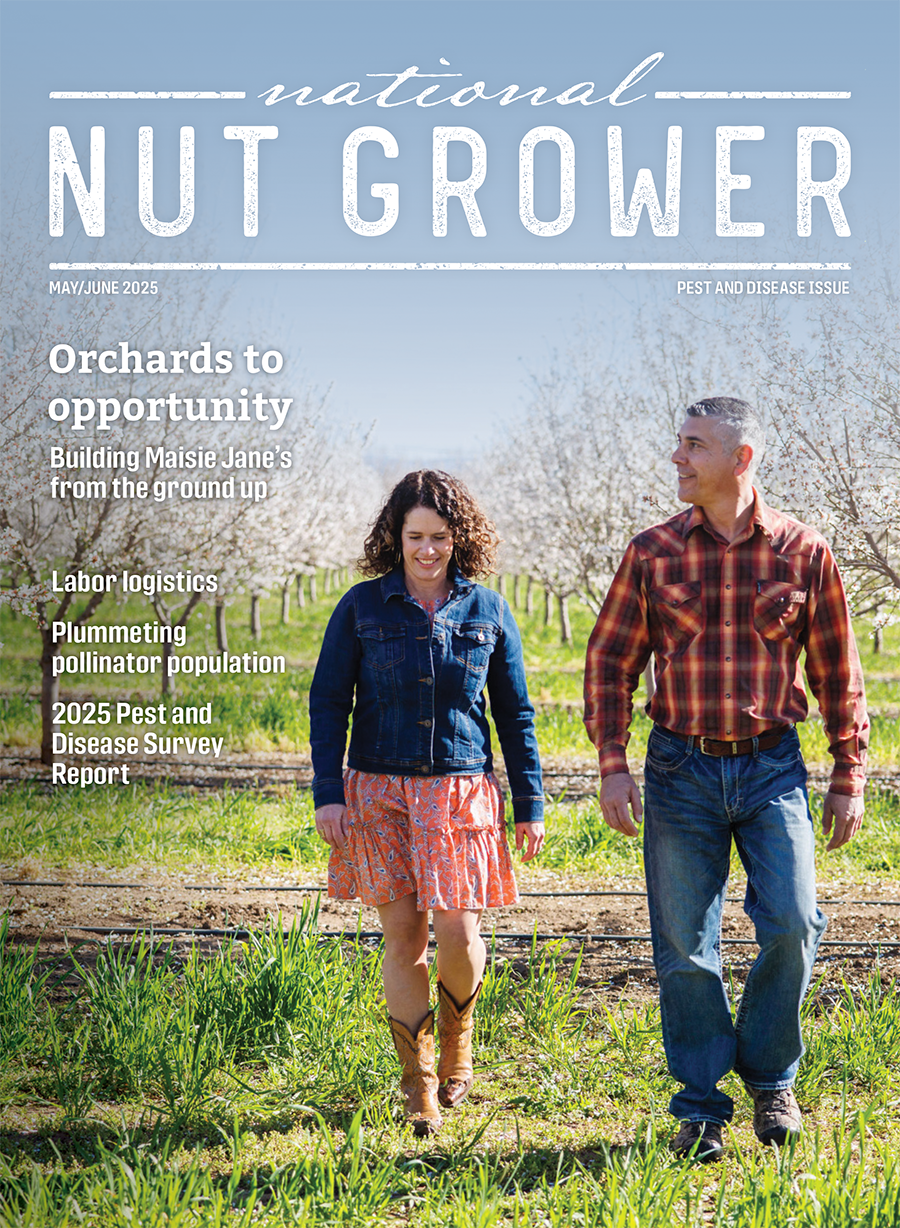University of Georgia Extension Horticulturalist Lenny Wells has put together the best table and schedule for pecan fungicide applications.

Below you will find examples of effective fungicide spray programs. Because of the high variability in scab susceptibility from one variety to the next, this year’s suggestions will be a little more complex and based on the cultivar you grow and the level of scab pressure you have at an individual site.
We have broken the cultivars down into 3 main categories (Low, Medium, and High) as seen below. The 4th category – Medium/High – consists of cultivars that could fall into either of these 2 categories. Under most conditions, they would have no scab problems under a regular spray program but in certain locations (below Highway 280, at low elevation, in crowded orchards) they will scab more and would need a high input program. Growers should use their own judgment and experience about where to place these.
| Low | Medium | Medium/High | High |
| Avalon | Creek | Caddo | Byrd |
| Elliot | Kiowa | Cape Fear | Cunard |
| Excel | Oconee | Huffman | Desirable |
| Kanza | Sumner | Schley | Morrill |
| Lakota | Zinner | Stuart | Pawnee |
| McMIllan | Ellis | Tanner | Treadwell |
| Gloria Grande | Tom | ||
| Whiddon |
Low Input
Low input cultivars are those with a very high degree of scab resistance –think Elliot, Excel, Lakota. These require a bare minimum of sprays–3 applications at most–primarily to help manage minor diseases aside from scab like powdery mildew, anthracnose, downy spot, etc. and to assist in maintaining scab resistance
Spray 1: Phosphite ~ mid-late April
Spray 2: Phosphite ~ mid-to-late May
Spray 3: 11 + 3 mix ~ early-mid June
Medium Input
These are cultivars that will require fungicide sprays to manage the disease but on which scab is usually easily managed without an intensive spray program in most locations. Some of these cultivars can fall into the high susceptibility category in locations with a history of scab on these particular cultivars or under situations of low elevation, poor airflow, or frequent rainfall. Use your best judgment with regard to where these cultivars fit for your own location.
Scab on these cultivars should be controlled with 7 sprays. If excessive rainfall is occurring throughout the nut sizing period, you can shorten your interval and extend the program out further than 7 sprays by continuing to rotate Miravis Top and Elast/Tin in the example below.
Spray 1: Phosphite ~ mid-late April
Spray 2: Phosphite OR 11+3 ~ mid May
Spray 3: Miravis Top ~ early-mid June
Spray 4: Elast+Tin OR phosphite ~ mid-late June
Spray 5: Miravis Top ~ early-mid July
Spray 6: Tin OR Elast+Tin ~ mid-late July
Spray 7: Miravis Top ~ early-mid August
High Input
These are cultivars that we know must be sprayed intensively in order to produce the crop. They will require at least 10 fungicide sprays and likely more in many locations. If you need to extend beyond spray 10, continue rotating Miravis Top and Elast/Tin. Bear in mind that some cultivars listed in the moderate category may fall into the high category in some locations.
Spray 1: phosphite
Spray 2: phosphite
Spray 3: 11 + 3 mix
Spray 4: Miravis Top + phosphite
Spray 5: Elast + Tin
Spray 6: Miravis Top
Spray 7: Elast + Tin
Spray 8: Miravis Top
Spray 9: Elast + Tin
Spray 10: Miravis Top
There are certainly more fungicides labeled for pecans than what you see listed in the examples above. Their exclusion from these examples does not mean they do not control scab. On the contrary, many are very good fungicides and could be rotated into a program just as easily as what you see above. But, based on Dr. Tim Brenneman’s data, we feel that these chemistries applied at the times shown above will offer maximum protection from leaf and nut scab. Group 3 and Group 11 fungicides are those containing both a Triazole and a Strobilurin fungicide chemistry (think Absolute, Stratego, Quadris Top, Amistar Top, Quilt, Brixen, Custodia, TopGuard EQ, and others)
With the late foliage development this year, crop maturity could potentially be later than normal which means the need for these sprays in the medium to high input category could extend out beyond mid-August. Fungicide sprays should continue through shell hardening.










